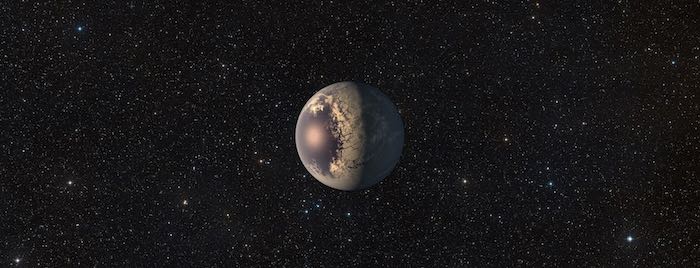April 4, 2017
Pictured is TRAPPIST-1f, one the the planets that has been speculated to harbor life.
These planets might seem perfect for human exploration, but “just right” might not be right at all. What probes would find on TRAPPIST-1d, -1e, or -1f is an unfamiliar and lifeless world. The intense UV radiation from the nearby parent star could strip water from the atmosphere and planet surface. The close orbits are likely tidally locked, meaning that one side of the planet remains in broiling sunshine while the other side remains in perpetual night. Any colonizers would be confined to the band of twilight girdling the planet, pent in by desert and ice. The vast temperature difference would also create enormously strong winds that could scour the surface and disturb any potential colonies. The strong tidal forces of the close orbit cause each planet to flex like a squeezed stress ball, generating vast amounts of internal heat. Spectroscopic analysis of the atmosphere suggests that the planets could be Venusian in density, with thick, cloying cloud cover over the entirety of the surface.
What would a colonizer’s life look like? Perhaps an extraterrestrial beach getaway in the rays of a permanent sunset. Perhaps an existence scraped out in narrow tunnels to avoid the high winds and the punishing radiation. But one thing is for sure: colonization won’t be possible for a long, long time, certainly far beyond any of our natural lifetimes. For now, we should preserve our own beaches and sunsets, our own deserts and plains. The more one looks to the stars, the more one recognizes the miracles of the earth.

